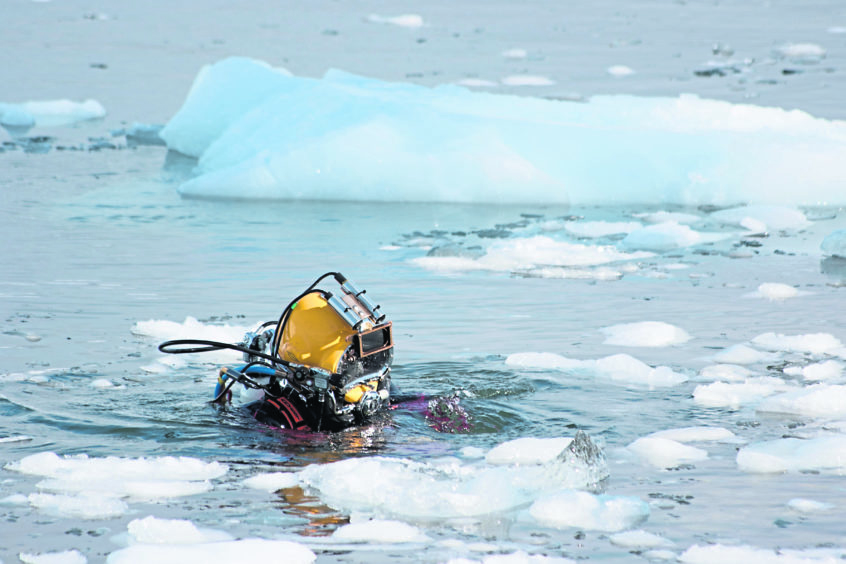
Waking up to a white Christmas will have come as no surprise to a team from a Shetland-based engineering firm who are spending the festive season working on a project described as “unique and challenging” by the company’s boss.
The group of five from Ocean Kinetics travelled more than 9,000 miles in early December to Rothera Research Station, in the Antarctic, where they are providing diving support services for the final stages of construction of a new wharf.
It is the company’s second stint on the project, as a sub-contractor to global engineering giant BAM, and managing director, John Henderson, said there had been “no shortage of volunteers” for the tough five-month assignment.
Once completed, the new wharf will be used by the British Antarctic Survey’s (BAS) new £200 million polar research ship, the RRS Sir David Attenborough, and associated schemes.
A team from Ocean Kinetics, which has its headquarters in Lerwick, worked on the first phase of the project, to dismantle the station’s old 197-foot Biscoe Wharf and begin construction of the new facility, during the last Antarctic summer, between November 2018 and this April.
With water temperatures ranging between -5 to 5 degrees Celsius, challenges included small drifting icebergs and protecting wildlife.
In advance of the project, the company built a diving support vessel designed to cope with the conditions and allow rapid launching and retrieval from the sea.
The current phase of work is expected to culminate in the handing over of the new wharf to BAS before the end of the Antarctica’s summer season.
Taking with them “everything they could possibly need for a five-month stint in the Antarctic,” the Ocean Kinetics Team underwent rigorous checks for medical and, particularly, dental issues before travelling to Rothera, to minimise the necessity of any evacuation.
Every component and tool was also checked, sprayed and, if necessary, sealed to prevent accidental transmission of invasive species to the island base.
Mr Henderson described the sub-contract as “exactly the kind of project Ocean Kinetics thrives on,” and said the work demanded a “high level of commitment” from the company’s staff.”
He added: “The positive side of a placement in Antarctica is, for many, the chance of a lifetime.
“To visit and stay in the most pristine environment on the planet, with unique wildlife, mountain ranges and the iceberg-spattered ocean is an experience second to none.”
Rothera Research Station is situated on the heavily glaciated, 87-mile long Adelaide Island, which lies 1,155 miles south of the Falkland Islands. The largest BAS Antarctic facility, it is a centre for biological research and a hub for supporting “deep-field” and air operations.
Operating throughout the year, its population peaks at just over 100 in the summer, with a 22-strong team working there through the winter from April to mid-October.
The Ocean Kinetics team are living alongside BAM’s team and BAS’s science teams during their stay there.
Although work at the station continues throughout the festive season, amid almost continuous sunlight, Christmas celebrations there include a sing-song and quiz, a four-course dinner and a movie.